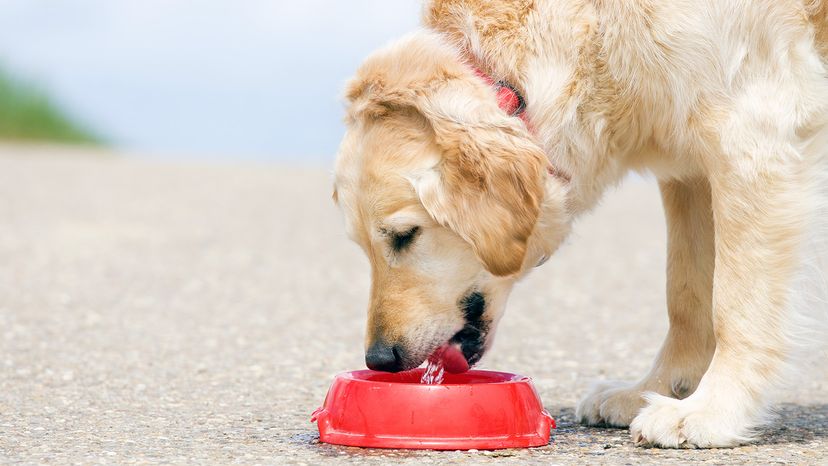 “Changing your dog’s water bowl from plastic to stainless steel can help reduce the bacteria that can colonize on the bowl’s surface. PK-Photos/Getty Images
“Changing your dog’s water bowl from plastic to stainless steel can help reduce the bacteria that can colonize on the bowl’s surface. PK-Photos/Getty Images
Regardless of how clean you may think your house is, you’d be wrong. All sorts of microbes lurk in your floorboards, your bed, on your toothbrush, and in your toilet, not to mention the kitchen sink sponge. From these seemingly innocuous places, nasty, vile, disgusting germs and bacteria can reach up, grab hold and make you sick. Now, we need to add one more thing to our home-cesspool list: the dog’s dish.
Researchers from Hartpury University in the United Kingdom say dogs’ water bowls are the third most contaminated item in the household and they can pose a serious health risk for us and our four-legged friends. Specifically, according to Hartpury researchers Aisling Carroll and Coralie Wright, ceramic and plastic bowls are toxic breeding grounds for E. coli, salmonella and MRSA. The scientists say that the increase in contact between humans and dogs is cause for concern regarding transmission of these bacteria.
Carroll and Wright studied several sets of bowls over six weeks. All the dogs that used the bowls (there were six medium-sized dogs) were healthy and the bowls themselves were brand new and sterilized prior to the investigation. As the dogs used the bowls, scientists swabbed the bowls several times over the six weeks to see what bacteria lingered.
At first, the researchers hypothesized that bacteria would thrive in the plastic bowls. "We thought this because out of all the other bowl materials, plastic typically wears away over time, leaving groves and ridges that could help bacteria to adhere to the bowl’s surface and make cleaning less effective due to the protection these areas would give," Carroll says in an email.
As expected, Carroll and her associates found the highest number of bacteria in plastic bowls, but the most harmful pathogens, including E. coli and MRSA, exploded in ceramic bowls. The researchers were shocked. "Ceramic was a surprise in that we found the most harmful microorganisms present," Carroll says. "At the moment, we can’t say for sure why this is, but it could be that ceramic enables bacteria to form structures called biofilms, which allow large numbers of bacteria to adhere and colonize surfaces as a group and protects them from certain elements that would normally kill/remove bacteria."
The stainless-steel bowls, on the other hand, had far less germs. Although Carroll says stainless steel still needs further testing, "the silver in stainless steel has been seen in previous studies to have antimicrobial properties so this would correspond with the results we found. From the results of this study, stainless steel is the preferred bowl material for pet owners to use to limit the number of bacteria that can colonize on the water bowl surfaces."
Regardless of the material, dog bowls are a fomite, an object that can carry bacteria and transfer it to anything it touches. "This," Carroll says, "can spread bacteria from dog to human or human to dog."
The study looked at only one dog using each bowl, but many people have more than one pet. Do the chances of infection increase if more than one pet — cats included — drinks from the same bowl?
"This is another area that will require further investigation," Carrol says. "But in theory the more animals using the same water bowl, the more likely that bowl is to have a large variety of bacteria present." However, she says, "the quantity of these bacteria would vary depending on a variety of factors (frequency of use, size of animals, position of water bowl in the house, cleaning regime, etc.) so it is hard to determine if the number of animals would have an impact."
Carroll recommends that if you have a sick pet, or one that has a compromised immune system, it might be wise for each animal to have their own water dish "to ensure no further cross contamination can occur."
So, what’s a pet owner to do? Carroll says all of us should clean our pet dishes with hot water regularly and a "pet-safe disinfectant." And we should all probably switch to stainless steel bowls.
NOW THAT’S INTERESTING
While you might think that your toilet is the dirtiest place in the house — think again. The National Sanitation Foundation International says household rags and sponges are the filthiest things in the house. In fact, the toilet didn’t even make the Top 10. But pet toys did come in seventh.

































